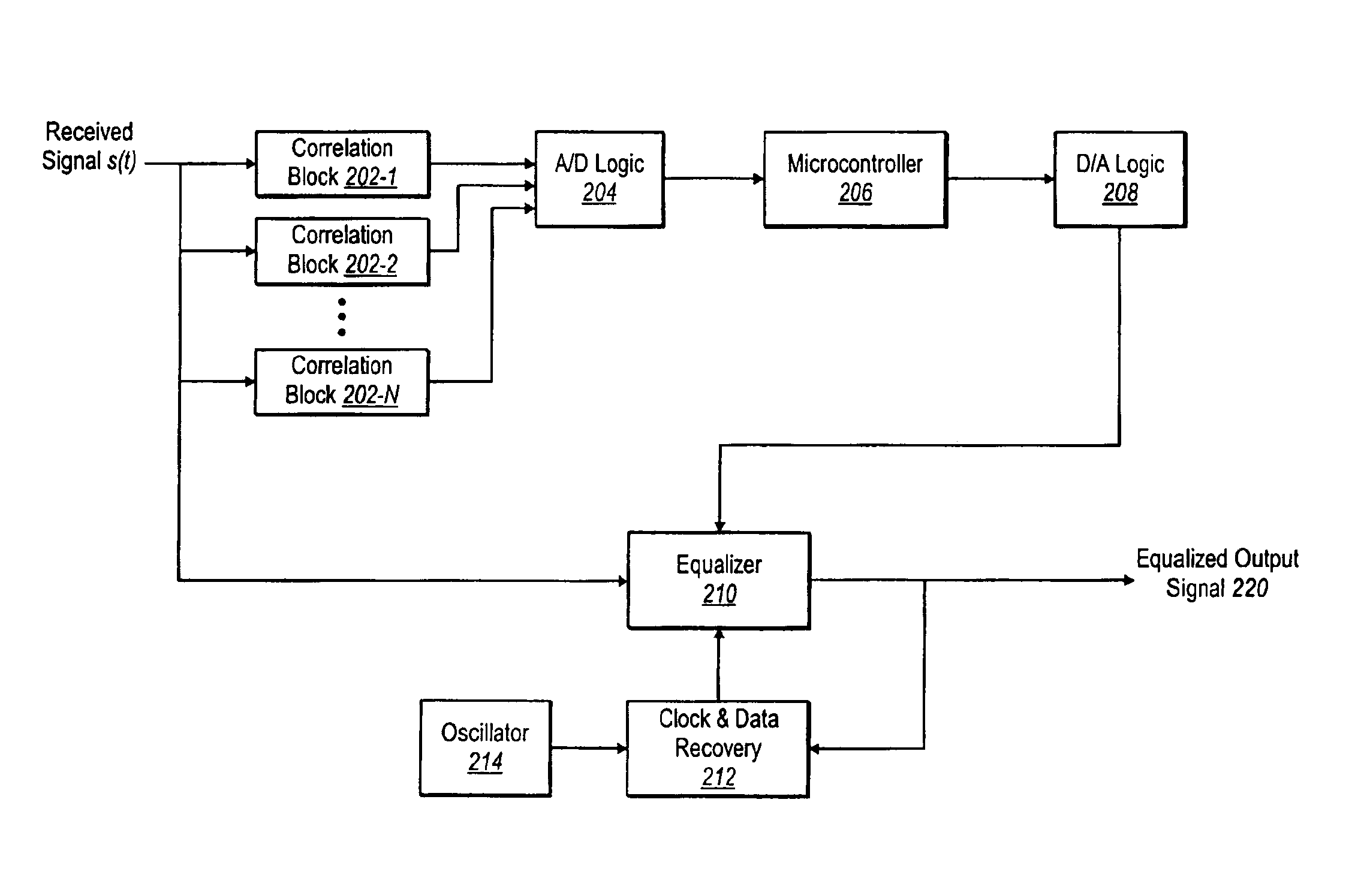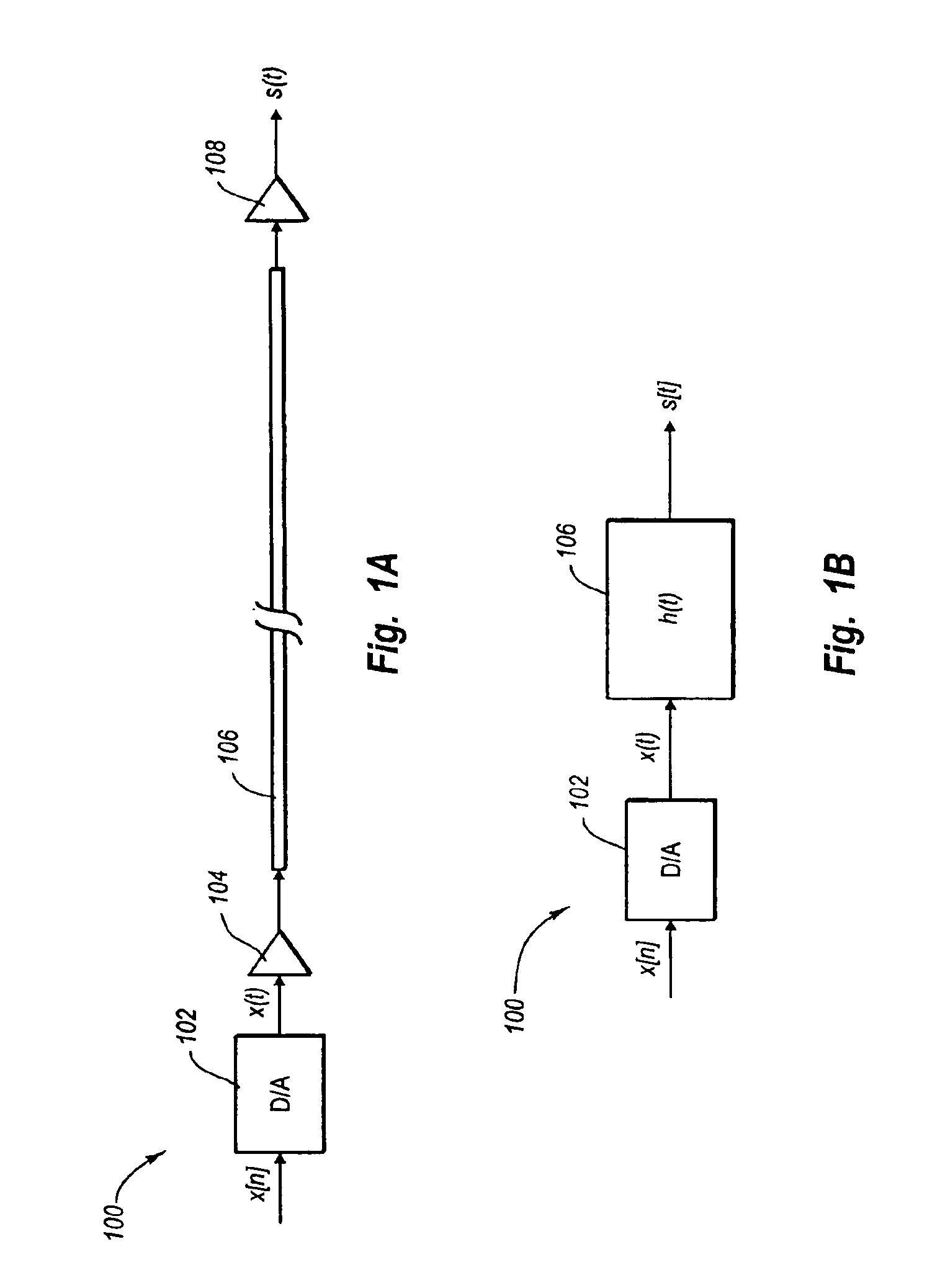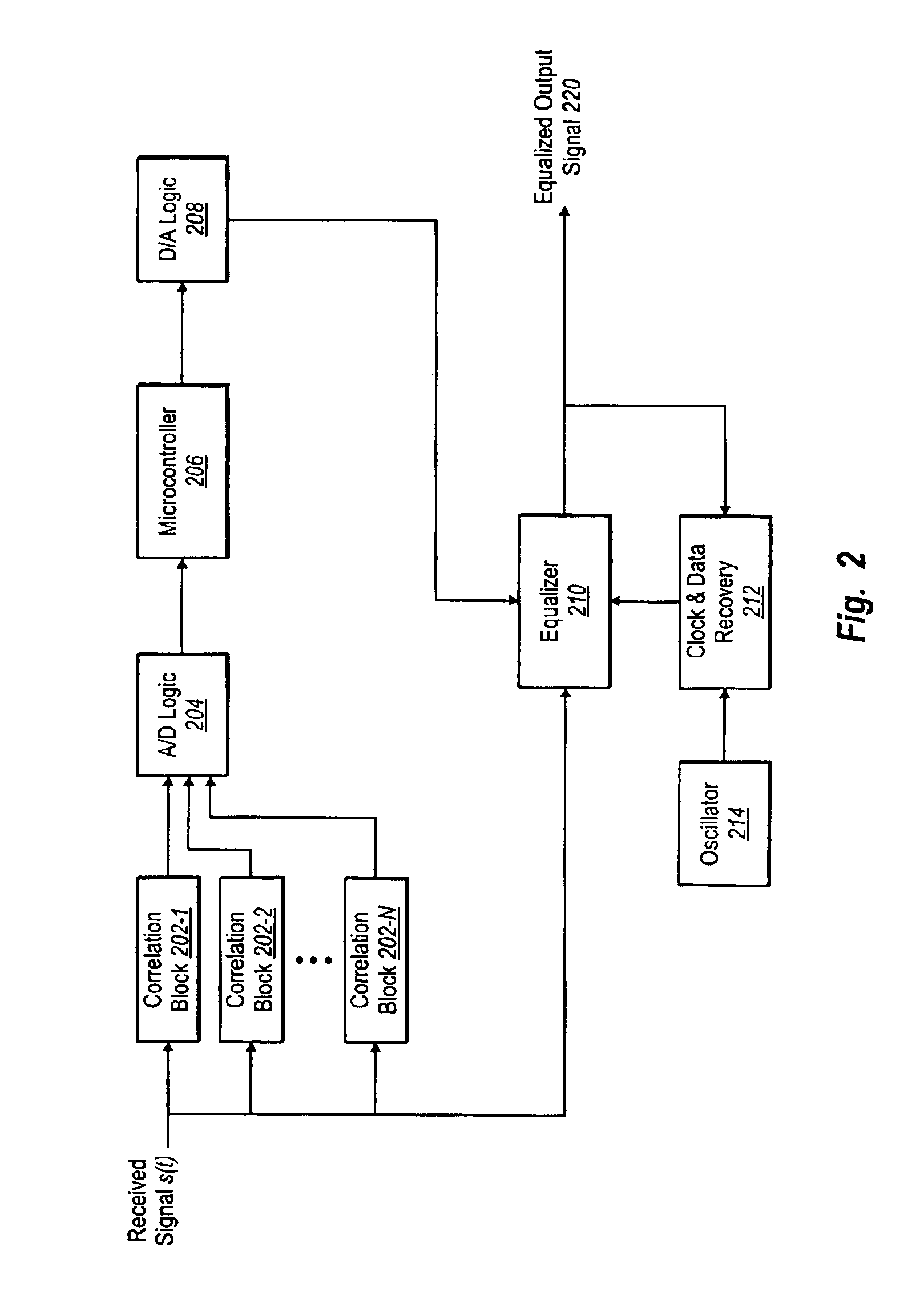Method and apparatus for reducing interference in a data stream using autocorrelation derived equalization
a technology of autocorrelation and data stream, applied in pulse technique, amplitude demodulation, instruments, etc., can solve the problems of limited usable bandwidth of fiber, inability to recover transmitted signals without errors by standard transceivers, and limited data transmission over long distances of optical fiber. , to achieve the effect of reducing the effect of channel response and channel respons
- Summary
- Abstract
- Description
- Claims
- Application Information
AI Technical Summary
Benefits of technology
Problems solved by technology
Method used
Image
Examples
Embodiment Construction
[0025]In this description, the term “subset” is used generally to mean a portion of something, up to and including the entirety of the something.
[0026]A. Mathematical Model of the Fiber Transmission System
[0027]Referring to FIG. 1A, a typical multimode optical transmission system 100 includes a digital-to-analog (D / A) converter 102, a transmission amplifier 104, a multimode fiber 106, and a receiver 108. An input bit sequence x[n] is provided to the D / A converter 102, which converts the sequence to an input signal x(t). The transmission amplifier 104 transmits the input signal on the multimode fiber. At the receiving end of the system, the receiver 108 determines an output signal s(t). Ideally, the input bit stream x[n] can be unambiguously recovered from this output signal s(t). In practice, however, this is difficult due to the distorting effects of amplification by amplifier 104, propagation through fiber 106, and reception by receiver 108 of x(t).
[0028]To determine a mathematica...
PUM
 Login to View More
Login to View More Abstract
Description
Claims
Application Information
 Login to View More
Login to View More - R&D
- Intellectual Property
- Life Sciences
- Materials
- Tech Scout
- Unparalleled Data Quality
- Higher Quality Content
- 60% Fewer Hallucinations
Browse by: Latest US Patents, China's latest patents, Technical Efficacy Thesaurus, Application Domain, Technology Topic, Popular Technical Reports.
© 2025 PatSnap. All rights reserved.Legal|Privacy policy|Modern Slavery Act Transparency Statement|Sitemap|About US| Contact US: help@patsnap.com



